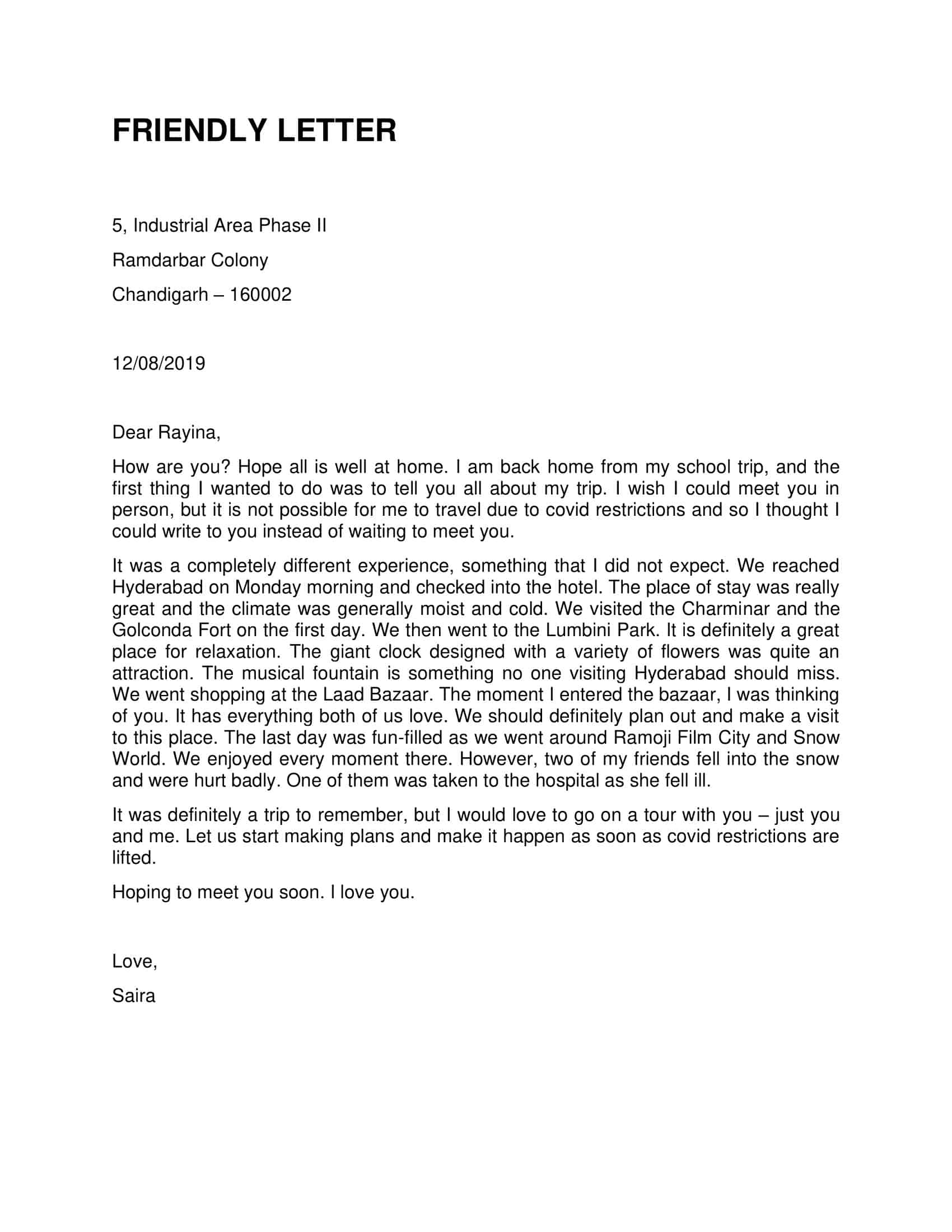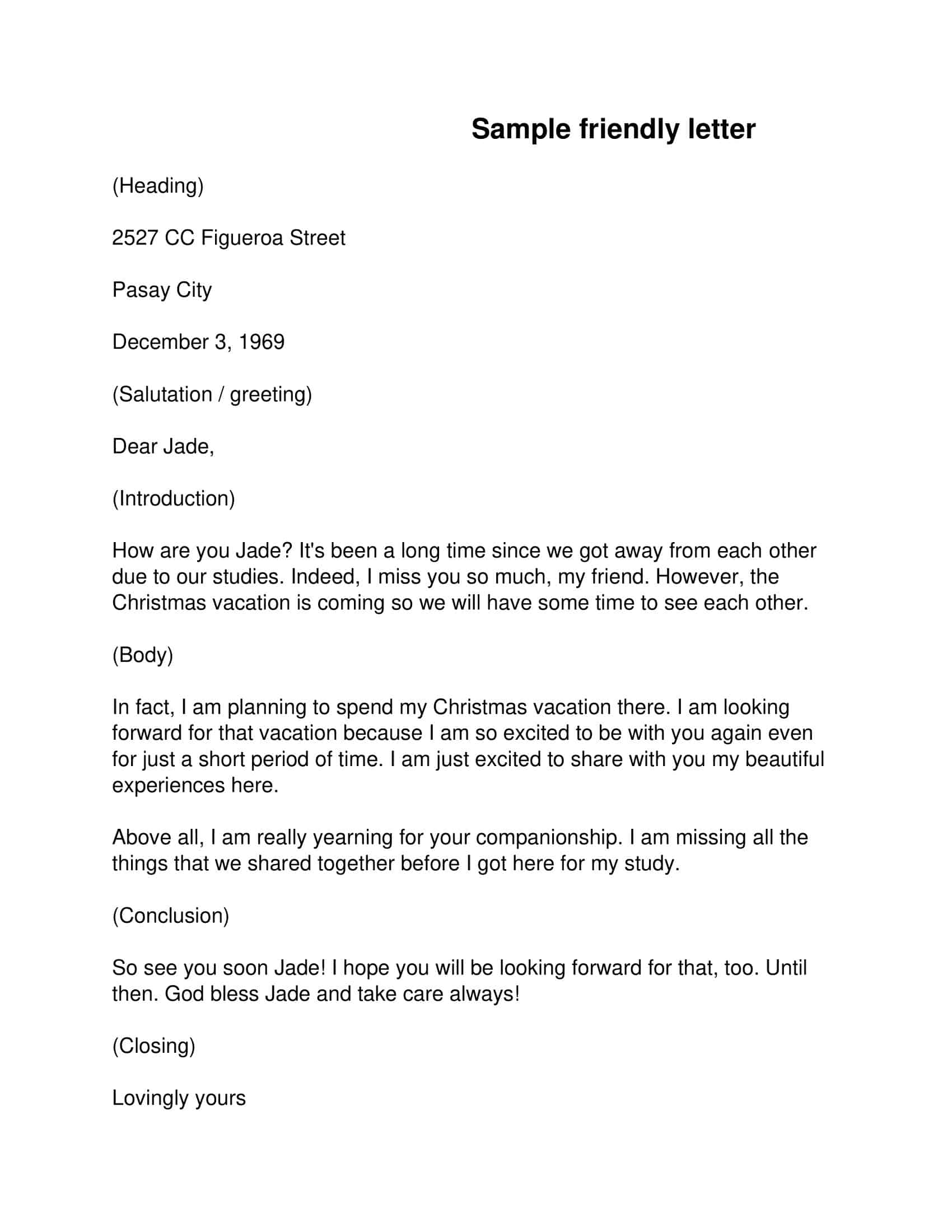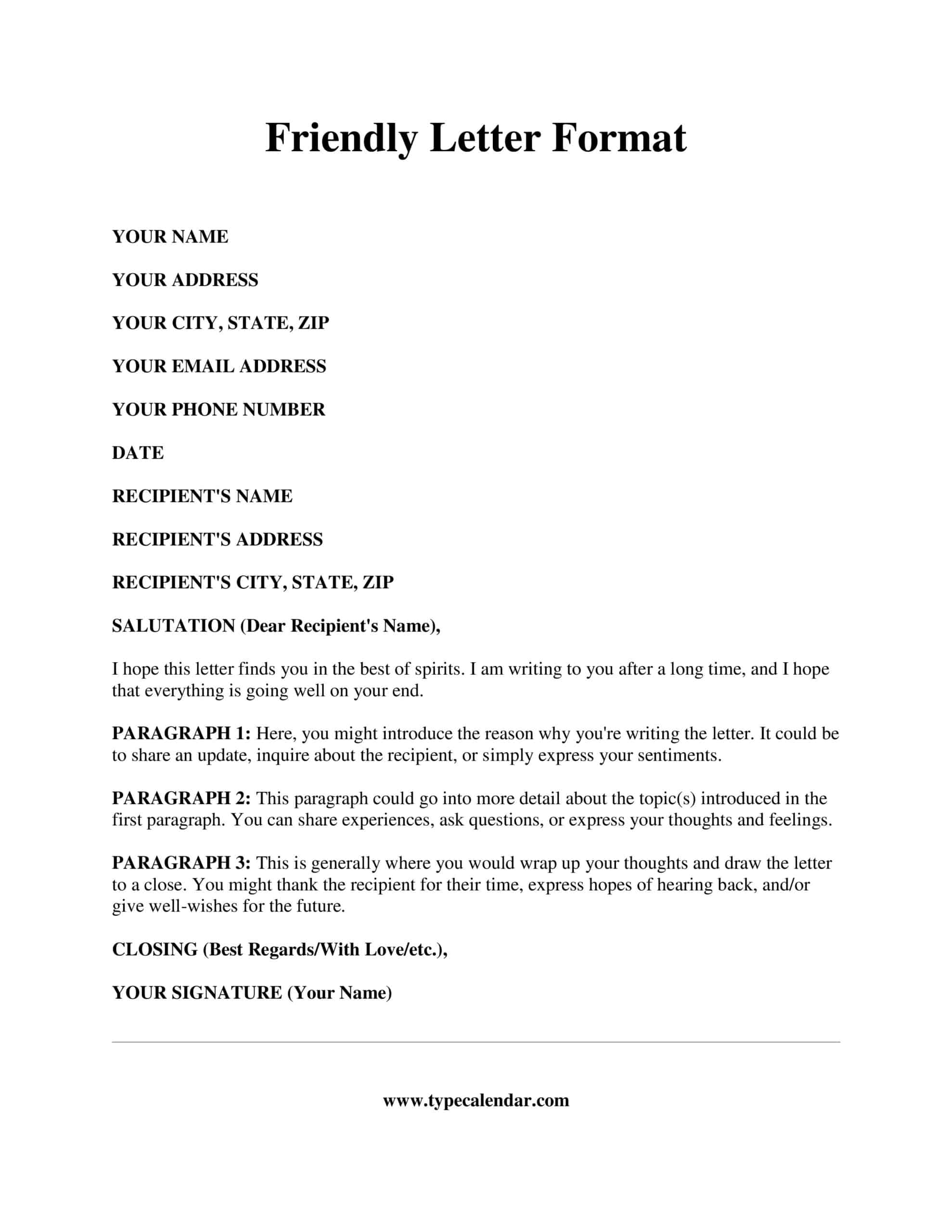Nowadays, the prevalence of readily available online templates has made it increasingly popular for individuals to opt for sending friendly letters. Instant messages and emails have become even more prevalent, offering convenience and ease. However, amidst this technological progress, the personal touch seems to have been lost.
The contents of these messages often derive from pre-existing samples rather than one’s authentic words. Engaging in communication through traditional means, such as writing a friendly letter, not only evokes a sense of sincerity but also conveys genuine intentions to the recipient. By taking the time and effort to craft a heartfelt letter, you demonstrate a profound level of care that surpasses the impersonal nature of digital correspondence.












































![43+ Printable Leave of Absence Letter (LOA) Templates [PDF, Word] / Free 1 Leave of Absence Letter](https://www.typecalendar.com/wp-content/uploads/2023/01/Leave-of-Absence-Letter-150x150.jpg 150w, https://www.typecalendar.com/wp-content/uploads/2023/01/Leave-of-Absence-Letter-1200x1200.jpg 1200w)
![Free Printable Congratulation Letter Templates [PDF, Word] Examples 2 Congratulation Letter](https://www.typecalendar.com/wp-content/uploads/2023/05/Congratulation-Letter-150x150.jpg 150w, https://www.typecalendar.com/wp-content/uploads/2023/05/Congratulation-Letter-1200x1200.jpg 1200w)
![Free Printable Invitation Letter Templates [PDF, Word] 3 Invitation Letter](https://www.typecalendar.com/wp-content/uploads/2023/03/Invitation-Letter-150x150.jpg 150w, https://www.typecalendar.com/wp-content/uploads/2023/03/Invitation-Letter-1200x1200.jpg 1200w)
